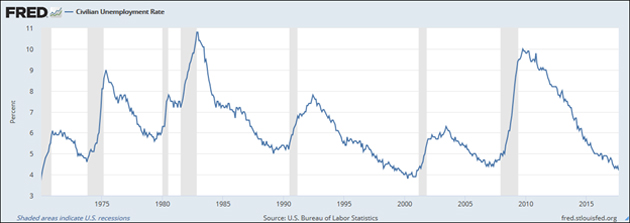According to the Bureau of Labor Statistics (BLS), the US economy is at full employment, or close to it. Yet it doesn’t feel that way for many Americans. Even if you have a secure job, you probably know people who don’t.
On the other hand, many small-business owners and HR people complain that they have trouble finding qualified workers—and that’s true for well-paid, low-skill jobs too.
What gives?
My theory: it’s all about geography.

Photo: AP
Percentages Are People
In September, the US unemployment rate dropped to 4.2%. That number got overshadowed by a more disturbing 33,000-person drop in total employment, due to Hurricanes Harvey and Irma.
But 4.2% unemployment is about as low as we’ve seen in recent history. Here’s a chart showing the monthly jobless rate since 1970.

Unemployment dropped almost to the current level in 2007 and went slightly below it in 2000. In both cases, a recession began soon afterward, as you see in the gray shaded areas.
Graphs and percentages are good for illustration, but there are people inside them, so let’s talk about the raw numbers for a minute.
In September—the same month we had 4.2% national unemployment—the US had 6.8 million unemployed people. Of those, 1.7 million had been unemployed for 27 weeks or longer.
An additional 5.1 million Americans were working “part-time for economic reasons.” In other words, they couldn’t find the full-time job they wanted, so they were forced to work part-time.
Add to that the 1.6 million “marginally attached” workers who were available to work, but hadn’t actively looked for a job in the last four weeks.
That means 13.5 million Americans were in some kind of employment distress last month.
And that doesn’t even include the millions who have simply dropped out of the labor force—and millions more who are employed at far lower wages than before the recession.











Leave A Comment